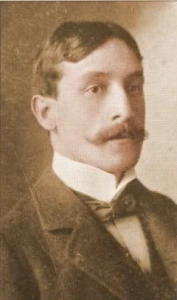We will discuss the testimonies of Ruben McFall, Granville Cox, and John Branham. Did their testimonies help or hurt the case against Doctor Marshall Benton Taylor? Why was one witness referred to in the testimonies by three different names? Was this hidden on purpose? Why was a certain event not asked about in the questioning? We will discuss these issues and many more as we go through the summary of the transcripts recorded by Charles A. Johnson.
The Trial So Far
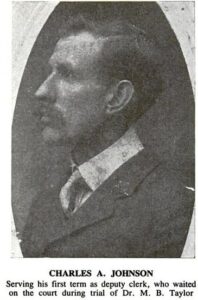
As we stated in the previous video, the trial of Dr. Marshal Benton Taylor has not been going well for Commonwealth attorney Robert Bruce. Nine witnesses had been called so far and only one of them had testified to anything helpful to his case. This was of course the eyewitness Jane Mullins.
But the problem was that Jane had been rattled and discredited by the defense attorneys. In fact, the defense had been so successful at rattling Jane that her final statement was tantamount to an admission that she had lied on the stand. And with that statement, Jane Mullins had virtually perjured herself as a witness.
Prosecutor Bruce would try to prove that animosity existed between Taylor and Mullins with the next 14 witnesses. But none of them would help Bruce to build this case and he would never firmly establish any other motive for the crime. Most of the next 14 witnesses, like many of the previous witnesses including Jane herself, would testify to things that would benefit the defense over the prosecution.
New Witnesses New Information?
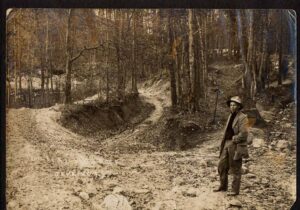
Of these 14, most simply testified that they had seen Doc Taylor the weekend before and the weekend after the murders. But the next three witnesses called by the prosecution Reuben McFall, Granville Cox, and John Branham stand out for a couple of reasons.
The first witness, Reuben McFall, immediately stands out because, once again, the style of writing changes for his recorded testimony. The writing style changes back for the other two, but McFall, Cox, and Branham had also participated in the shootout at the clefts of the Cumberland’s.
There is no indication of this in the recorded testimony of these three men and we only learn about it after the testimony and cross-examination of defense witness Mrs. Clifton Roberson. In her testimony she identifies Ruben McFall as Rube McFall and, on cross-examination, she acknowledges that she had heard that McFall was a deputy after the incident she testifies about. The testimony she gives is so damning that McFall would be recalled for the rebuttal. But in that rebuttal, the name recorded in the transcript is R.D McFall and he identifies himself as a Deputy Sheriff during that incident.
Although this name change is subtle and seemingly insignificant, there is nothing recorded in the transcript that would give the appellate court a clue that a single witness from the trial had been identified under three different names in the transcript. And without noticing the change in writing style recorded here in the transcript, we would have missed it too.
However, because of this change in writing style and our intimacy with the different versions of the often-told story we were able to link all three names together and closely examine his two given testimonies as well as what Mrs. Roberson had testified to about him and the posse. But it was HIS testimony as recorded at this point in the transcript and what seems to have been omitted from that testimony that has convinced us, more than any other thing, that this transcript, the one that was sent to the appellate court, was edited for content.
TESTIMONY OF Reuben McFall, witness for the Commonwealth.
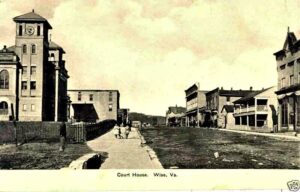
McFall testifies here that he had worked with Taylor as a paid deputy in the Internal Revenue Service. He goes on to testify that Dr. Taylor had asked him on several occasions to go with him to kill Ira and Henderson Mullins. He then insinuated that Doc had once told him that he had gone once by himself and “Put a man out of the way.” Then he states that Taylor told him that if no one would go with him he would go by himself.
On Cross Examination, Ruben McFall would admit that these conversations had occurred more than two years prior to the Killing Rock Massacre. He then testifies about when and where the conversations occurred and who had been witness to those conversations.
The interesting thing here is that McFall does not mention that Granville Cox had been present in any of these conversations. Yet Cox would testify that McFall had been present in a conversation about the same thing. McFall would finish his testimony by telling the court that he had quit working for Dr. Taylor because of a dispute over pay.
The Clefts of the Cumberland Fiasco
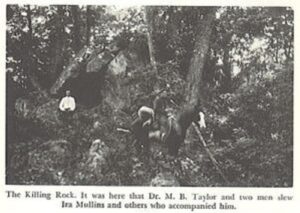
As we have already stated, the change in writing style for the testimony of Ruben McFall brings attention to what is NOT recorded here in his testimony or anywhere else in the transcript. Newspaper articles from around June 9th, tell us that the Fleming brothers and Doc Taylor had sent word to Sheriff Holbrook, telling him where they were.
This would in fact be the first of three such letters. In this letter, they state that they “fear for their lives” and ask for an escort to the Wise County Courthouse at Gladeville. And that they will come peaceable, with the condition that they are allowed to turn states’ evidence.
Sheriff Holbrook replies to the letter by telling the newspapers, that he is too busy to be bothered with an escort at the time. But on July 17th, Sheriff Holbrook did send one of his deputies and about 20 men to the clefts of the Cumberlands to arrest Dr. Taylor and the Fleming brothers. The newspapers from the time record this incident and call it “A botched arrest attempt and Shootout.”
By the time of the Taylor trial this “botched arrest attempt and shootout” was well known. The fact that Ruben McFall had been the deputy that had led the party sent to arrest Taylor would also have been well known by both the prosecution and the defense. Yet we are led to believe that there is no testimony to this fact at this point in the trial or recorded here in the transcript… this is highly improbable.
To be fair, when the writing style changes back for the testimony of Granville Cox and John Branham, the fact that they were in the McFall posse is also not recorded. However, neither of these men was listed as deputies and the fact that they were in the posse may not have been known to the defense. Something that we only learn from the later testimony of defense witness Mrs. Clifton Roberson.
TESTIMONY OF Granville Cox, witness for the Commonwealth.
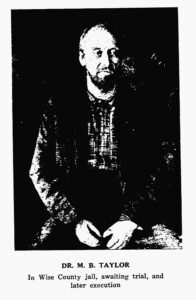
Granville Cox, like McFall, would testify that Taylor had tried several times to get him to go to Kentucky with him to kill Ira and Henderson Mullins. Cox also testifies that “on one occasion Taylor had his “provisions poke” made” and told him, “If the boys do not come with me and help me, I will go myself.” Granville tells the court that Taylor had wanted him and the boys to “go and help clean up the head of Elkhorn” and stated, “if I don’t get it done this year, I will do it next year or have it done.”
On cross-examination, Cox just like Ruben McFall admits that these conversations had occurred more than two years ago. He also admits that at the time he had been working with Dr. Taylor as a paid revenue deputy. Then there is a very peculiar statement in the transcript. Granville is recorded as saying; “I had no thought at the time that Taylor meant what he said, I thought it was all talk.”
This is very odd as this testimony would be considered a “Judgmental Statement” made by a witness. Usually, something like this would have been an item of objection and stricken from the court record. Yet here it is, if this was an overruled objection then it was probably one of the 12 exceptions to the trial.
We need to point out once again that we have a record saying that these 12 exceptions were to be made part of the court record and attached to the appeal. But when Charles Johnson obtained the “Only existing transcript of the trial” from the appellate court, the only thing attached to it was the indictment. Which for various reasons we believed had been altered before it was sent to the higher court and the four affidavits about Taylor’s rifle. Granville Cox would go on to testify that “he and Dr. Taylor were not on good terms.”
We must pause here to point out another issue with the testimonies of Ruben McFall and Granville Cox. Both attest that the testimonies they had given about Taylor talking about killing Ira and Henderson Mullins had occurred over two years prior. A later witness for the commonwealth testifies about being with Taylor when news came from North Carolina saying that Ira Mullins had been killed in a shootout with revenue agents… two years ago in 1890. This was of course the shootout that had left Ira Mullins a quadriplegic.
Other witnesses both for the prosecution and defense will testify that Taylor had made no threats against Mullins since that unfortunate incident. But several will testify that Ira Mullins had made several threats against Taylor and that Mullins had offered $300 to anyone who would kill Dr. Taylor.
TESTIMONY OF John Branham, witness for the Commonwealth.
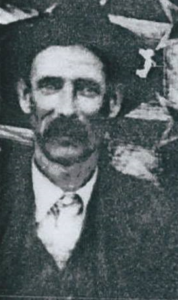
John Branham was the third and final member of Ruben McFall’s posse to testify in the trial. Branham’s testimony is a little strange and confusing given the testimony that would later be given about him. He testifies that he had seen Taylor on Thursday after the massacre. What he testifies about could only be seen as a semi-friendly conversation.
They had spoken about the ambush and who was being accused of the crime both in Virginia and Kentucky. Branham would also give testimony that Dr. Taylor had told him he was on his way to the courthouse. Taylor had said that he was to meet Doc Mullins there and that Mullins was going to swear out an affidavit about Ira Mullins offering money to anyone who would kill him (Taylor).
Taylor had also told Branham that “…he could prove directly where he was on that day.” Taylor had gone on to tell him that he had been, “waiting on some sick folks on the other side, in Kentucky.”
A defense witness corroborates this story by telling the court that Taylor had been staying at her house for a month because her daughter was having a hard pregnancy. Her testimony gives the impression that the child had been born that night. This means that at the time of the massacre her daughter may have been in labor and Taylor had been in attendance with her.
There are also other possibilities, we know that the Adams family had been wracked with an outbreak of typhoid. In addition, other witnesses testify about Taylor staying with Ellen Alley during that time and seeking him out there for treatment for other sick individuals.
There is also a letter, unfortunately, this letter was sent anonymously but it was sent to Nancy Booth Taylor shortly after the death of Dr. Taylor. In it, a woman says that she and her husband had been met by someone near the Pound Gap. They had been on their way to Gladeville to testify in the Taylor trial as he had been waiting on her the day of the massacre. They were threatened and told to return home. She was writing to the widow Taylor to give her condolences and to apologize because she and her husband were not able to testify on Dr. Taylor’s behalf.
John Branham would end his testimony with another odd statement. Branham would say of Taylor, “I do not think he seemed exactly natural as he seemed to talk a little lower than common.” What Branham meant by this statement is unclear. Was he saying that Doc had spoken in a very deep voice or is there a typo here and it should read that Taylor spoke a little slower than other people? We probably will never know.
Thank You
We at Kentucky Tennessee Living would like to thank you for watching our series on The Killing Rock. Don’t forget to hit that like button as the more likes we receive the more likely YouTube is to suggest our videos to other viewers. Also, to receive notice when we upload a new video be sure to subscribe and click the bell notification.
We thank you for continuing to support Kentucky Tennessee Living. As we bring to you the history of the Appalachian Mountains. We must remind everyone that the story names Killing Rock: The Oft Told Tale (s) and Killing Rock: The Untold Story and Killing Rock: the Trial are all under Kentucky Tennessee Living copyright.
Source Information
A Narrative History of Wise County, Virginia By Charles A. Johnson Pub. 1938.
Copyright and Other Information
All photos are in the public domain unless otherwise noted. This includes photos dated before 1923. All other photos are used with permission or under the education fair use statute of the US copyright law.
Copyright 2022 Kentucky Tennessee Living
kytnliving.com/copyright-2/
Social Media Pages
For more about us, you can visit our Facebook page:
https://www.facebook.com/kytnliving
Our Twitter page:
https://www.twitter.com/KYTNLiving
Our YouTube Channel:
https://www.youtube.com/kytnliving
When we forget our past and who we are as a people, then we become who “they” say we are. ~~ David Sergent
I have attended the University of Kentucky. I have an Associates Degree from Hazard Community College and Technical School. I have also attended the University of Pikeville. I have taken several classes in Journalism as well as in the Appalachian History, Literature, and Sociology during my time at those schools.
I was born in Florida and grew up in Burdine, Kentucky. I have been married to David W. Sergent since May 4, 2013. I have two children and four grandchildren from a previous marriage. I currently live in Tennessee but my hope is to one day come back home to live in the beautiful mountains once more.


